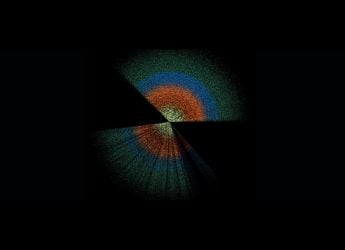- Home
- Glance
Scientists Decode the Source Behind Urine's Yellow Colour
Scientists Decode the Source Behind Urine's Yellow Colour

The scientific inquiry into the colouration of urine has culminated in a significant revelation: identifying the enzyme responsible for its distinctive yellow hue—bilirubin reductase.
This enzyme, bilirubin reductase, stands as the agent orchestrating the manifestation of yellow pigmentation in urine. Beyond its chromatic significance, this discovery holds promising implications for comprehending afflictions such as jaundice and inflammatory bowel disease intricately linked with this enzymatic process.
The genesis of this chromatic phenomenon lies in the degradation of red blood cells, yielding bilirubin as a byproduct. Ordinarily, bilirubin traverses the gastrointestinal tract for elimination, yet its reabsorption into the bloodstream occasions jaundice, evident through the yellowing of the skin and eyes.
A longstanding enigma within scientific circles was the transformation mechanism of bilirubin into the chromatic pigment observed in urine. Enter bilirubin reductase (BilR). This enzyme is situated amidst gut microbes and converts bilirubin into urobilinogen, a colourless derivative. Notably, urobilinogen subsequently undergoes spontaneous degradation into urobilin, the well-known yellow pigment.
The significance of this enzymatic revelation extends beyond mere colouration. Understanding bilirubin reductase represents a pivotal elucidation of bilirubin's metabolic pathways after red blood cell breakdown. This comprehension stands poised to revolutionize therapeutic approaches to conditions associated with elevated bilirubin levels, including jaundice-induced neurological complications and gallstone formation in inflammatory bowel disease.
Bilirubin reductase is conspicuously absent in neonates and adults afflicted with inflammatory bowel diseases. This absence holds clinical significance, given its implication in compromised bilirubin breakdown, precipitating jaundice in infants and gallstone formation in adults grappling with gastrointestinal disorders.
Future research directions entail human studies, particularly in cohorts like premature infants exhibiting heightened jaundice prevalence alongside diminished bilirubin-reducing microbial populations.
The significance of monitoring urine colour remains paramount. Variations warrant attention, such as dark yellow indicating inadequate hydration or reddish hues potentially signifying ailments ranging from kidney stones to liver complications.
The gastrointestinal microbiome extends its influence beyond urine pigmentation. It permeates multiple physiological domains, modulating immune responses, impacting neural function, and wielding influence over maladies encompassing diabetes and cardiovascular conditions.
Get your daily dose of tech news, reviews, and insights, in under 80 characters on Gadgets 360 Turbo. Connect with fellow tech lovers on our Forum. Follow us on X, Facebook, WhatsApp, Threads and Google News for instant updates. Catch all the action on our YouTube channel.
- Samsung Galaxy Unpacked 2025
- ChatGPT
- Redmi Note 14 Pro+
- iPhone 16
- Apple Vision Pro
- Oneplus 12
- OnePlus Nord CE 3 Lite 5G
- iPhone 13
- Xiaomi 14 Pro
- Oppo Find N3
- Tecno Spark Go (2023)
- Realme V30
- Best Phones Under 25000
- Samsung Galaxy S24 Series
- Cryptocurrency
- iQoo 12
- Samsung Galaxy S24 Ultra
- Giottus
- Samsung Galaxy Z Flip 5
- Apple 'Scary Fast'
- Housefull 5
- GoPro Hero 12 Black Review
- Invincible Season 2
- JioGlass
- HD Ready TV
- Laptop Under 50000
- Smartwatch Under 10000
- Latest Mobile Phones
- Compare Phones
- Realme C85 Pro 4G
- Realme C85 5G
- Vivo Y19s 5G
- iQOO Neo 11
- Nothing Phone 3a Lite
- OnePlus Ace 6
- Lava Shark 2 G
- OnePlus 15
- MacBook Pro 14-inch (M5, 2025)
- Asus Vivobook S16 (S3607QA)
- iQOO Pad 5e
- OPPO Pad 5
- Garmin Venu X1
- Redmi Watch 6
- TCL 55 Inch QD-Mini LED Ultra HD (4K) Smart TV (55Q6C)
- TCL 55 Inch QD-Mini LED Ultra HD (4K) Smart TV (55C6K)
- Asus ROG Ally
- Nintendo Switch Lite
- Haier 1.6 Ton 5 Star Inverter Split AC (HSU19G-MZAID5BN-INV)
- Haier 1.6 Ton 5 Star Inverter Split AC (HSU19G-MZAIM5BN-INV)












